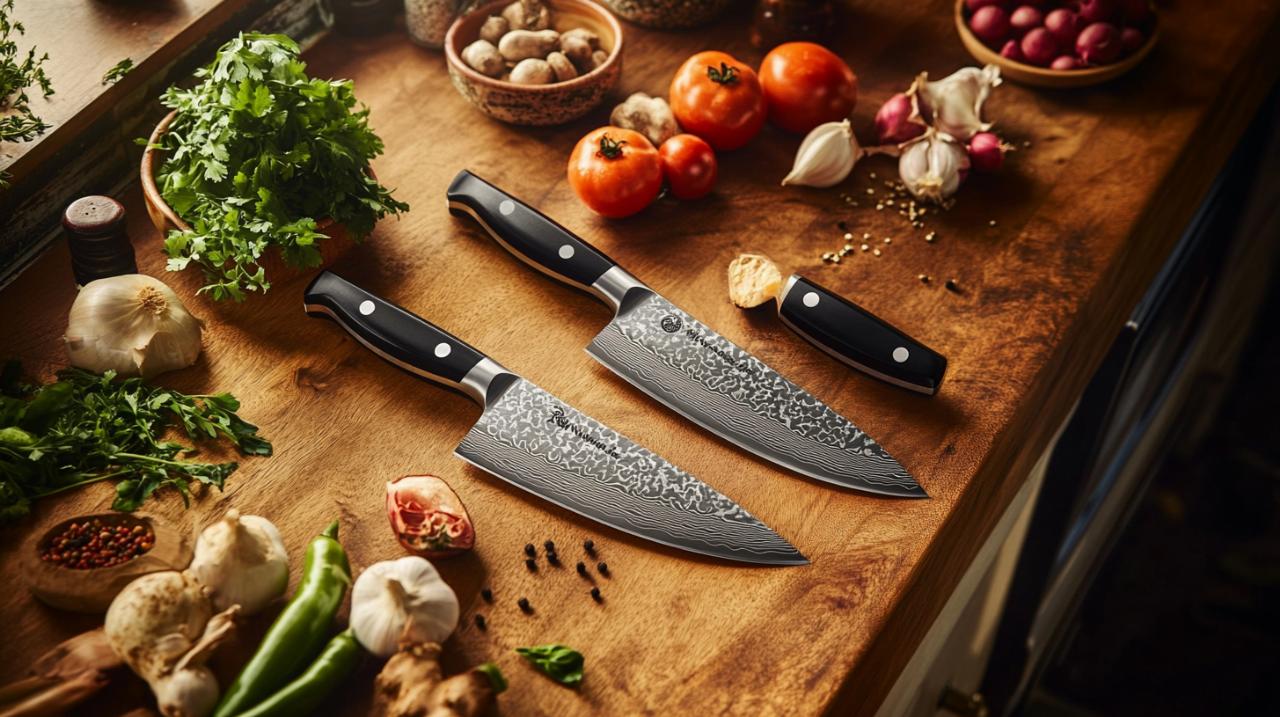When it comes to equipping your kitchen with tools that genuinely make a difference, few investments prove as worthwhile as a quality knife collection. The market offers countless options, yet certain names consistently stand out for their commitment to excellence and time-tested reliability. For those seeking a blend of traditional craftsmanship and modern performance, the journey often leads to German engineering prowess, where precision meets practicality in every slice and dice.
Superior Craftsmanship and Durability of Zwilling Twin Chef Knives
German engineering excellence in every blade
Henckels brings nearly three centuries of knife-making experience to the table, a heritage that speaks volumes about their understanding of what makes a truly exceptional cutting tool. The zwilling twin chef knife set emerges from their German factory where skilled artisans have refined their techniques over generations. Each blade is crafted from high-carbon stainless steel, a material choice that balances strength with corrosion resistance, ensuring your investment withstands the rigours of daily kitchen use. The steel undergoes a distinctive treatment process involving Friodur ice-hardened technology, where the metal is heated to soaring temperatures of around one thousand degrees Celsius before being rapidly cooled to minus seventy degrees. This dramatic temperature shift fundamentally alters the molecular structure, creating blades that resist wear and maintain their cutting edge far longer than conventionally treated alternatives.
The technical specifications reveal impressive attention to detail, with the steel achieving approximately fifty-seven on the Rockwell hardness scale, striking an optimal balance between durability and flexibility. The blades feature a fifteen-degree edge angle, a design choice that delivers exceptional sharpness whilst remaining forgiving enough for home cooks who may not yet have mastered professional sharpening techniques. The full tang design means the steel extends completely through the handle, secured by three solid rivets, creating a knife that feels reassuringly balanced in hand. These structural decisions aren't merely aesthetic; they fundamentally affect how the knife performs during extended food preparation sessions, reducing hand fatigue and improving control.
Long-lasting sharpness and edge retention
One of the most frequently praised characteristics among those who have used these knives for extended periods is their remarkable ability to maintain a keen edge. Users report that even after years of regular use, the blades continue to perform admirably, requiring only occasional attention with the included sharpening steel to restore their original bite. This longevity stems directly from the ice-hardening process mentioned earlier, which creates a blade structure that resists the microscopic dulling that occurs with everyday cutting tasks. Unlike cheaper alternatives that seem to lose their effectiveness after mere months, these knives retain their sharpness over years, making them a genuinely economical choice when viewed through the lens of long-term value.
The combination of German steel composition and precise manufacturing tolerances means these blades can tackle everything from delicate herbs to dense root vegetables without complaint. The lightweight construction might initially surprise those accustomed to heavier forged knives, yet this characteristic quickly proves advantageous during lengthy prep sessions. The stamped blade construction, whilst different from traditional forging methods, allows for consistent quality across the entire range and contributes to the comfortable weight distribution. Proper care extends this impressive performance even further, with hand washing recommended over dishwasher use to preserve both the blade edge and the handle integrity over decades of service.
Versatility and Practical Advantages for Home Cooks

Complete range for all your kitchen prep needs
The zwilling twin signature collection typically arrives as a comprehensive set, with configurations ranging from compact seven-piece arrangements to expansive nineteen-piece collections housed in attractive wooden blocks crafted from materials such as birchwood. A standard seven-piece configuration generally includes a twenty-centimetre chef's knife that serves as your primary workhorse, alongside a paring knife for detailed work, a fillet knife for precision tasks, and a carving knife for serving. Kitchen shears and a sharpening steel complete the ensemble, providing everything needed for most culinary adventures. The knife block set format offers both practical storage and an elegant countertop presence, keeping your tools organised whilst showcasing the quality of your kitchen equipment.
This versatility means amateur cooks can approach virtually any recipe with confidence, knowing they possess the appropriate tool for each task. The chef's knife handles general chopping and slicing duties, the paring knife manages intricate peeling and trimming, whilst the bread knife, included in larger sets, tackles crusty loaves without crushing their soft interiors. Some collections incorporate a Santoku knife, reflecting Japanese culinary influence and offering an alternative cutting style particularly suited to vegetables and boneless proteins. The comprehensive nature of these sets eliminates the frustration of discovering mid-recipe that you lack the proper implement, allowing you to focus on creativity rather than equipment limitations.
Balanced handling and comfortable grip design
Beyond sharpness and durability, the everyday experience of using these knives reveals thoughtful ergonomic considerations that distinguish them from lesser alternatives. The plastic handles feature textured crops specifically engineered to prevent slippage, even when your hands are wet or greasy from handling ingredients. This safety feature cannot be overstated, as a secure grip directly translates to better control and reduced accident risk. The ergonomic shaping means the knife settles naturally into your palm, with the weight distributed in a manner that feels neither handle-heavy nor blade-heavy, achieving that elusive equilibrium that professional chefs prize.
Users consistently mention the comfortable grip design as a standout feature, particularly during extended cooking sessions where hand fatigue can become a genuine concern. The handle length of approximately thirteen centimetres accommodates various hand sizes, whilst the three-rivet construction ensures the handle assembly remains solid even after years of use. The lightweight characteristic of these stamped blades, combined with the balanced design, means you can prep ingredients for elaborate meals without developing the hand cramps associated with heavier implements. This attention to the human element of kitchen work demonstrates that Zwilling understands their knives exist not merely as cutting tools but as extensions of the cook's hand, facilitating rather than hindering the creative process. The set's overall weight of around seven hundred grams for the knives themselves, combined with block dimensions of approximately forty centimetres in height, thirty-four centimetres in width, and twelve centimetres in depth, means they occupy reasonable space whilst remaining substantial enough to signal their quality.
